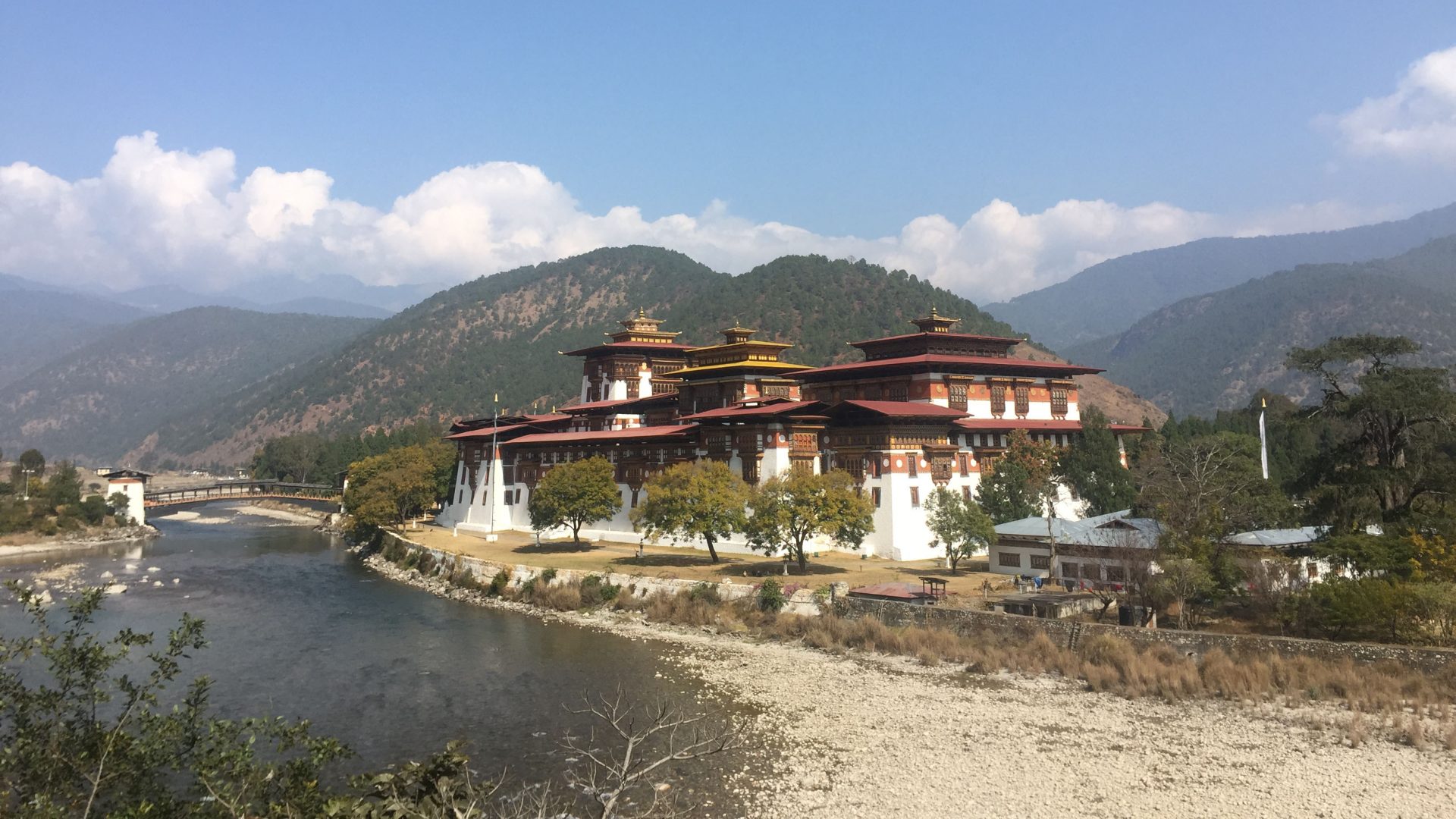“Bhutan” is a name given by our neighbor India which means Highland as Bhutan borders India in the North-eastern Himalayas. It gradually ascends from the Himalayan foothills to the chain of mountains in the central regions of the country and protected by the Himalayan range to the north bordering China.
The local name of the country is Druk-yul which means Dragon Nation and the People are known as Drukpas, the dragon people. The name comes from the main school of Buddhism known as Drukpa Kajue in the country which was promulgated by Tibetan Lamas in the early 12th to 14th century and by Zhabdrung Rinpochhe in the 17th century. Before the arrival of Zhabdrung Rinpochhe, the country was in turmoil but he subdued local resistance, ward off numerous Tibetan Invasions and unified the country under one rule and proclaimed Bhutan as a sovereign state.
A few decades after the death of Zhabdrung Rinpochhe internal strife broke out in the country and a hundred years of internal conflict for power ensued until Desi Jigme Namgyal unified by the country under one command yet again. This was achieved after series of skirmishes and battles among the regional rulers who had gained power after the diminish of Zhabdrung’s regime.
During the end of Desi Jigme Namgyal’s regime Bhutan had numerous encounters with British India. British India wanted to establish trade with Tibet and Bhutan. During a signing of one of the treaties the points were not agreeable to Bhutan and Desi Jigme Namgyal humiliated the mission lead by Ashley Eden. That lead to the Duar wars and eventually the two parties settled down with the signing of the treaty of Sinchula.
Following Jigme Namgyal the people came to a general agreement that the country needed to come under one rule. Therefore on 1907 the representatives of the people, the monastic body signed accord to crown Ugyen Wangchuk the son of Jigme Namgyal as the first of the hereditary monarch of the Kingdom of Bhutan. During the reign of the first and second king Bhutan maintained good relations with British India and also reformed taxes and paved the way for Bhutan to slow enter modernization. It was during the reign of the Third King His Majesty Jigme Dorji Wangchuck that Bhutan welcomed modernization with improved ties with Liberated India, introducing modern education, various reforms like reducing taxes, abolishing serfdom. During the time of the Fourth King His Majesty Jigme Singye Wangchuck Bhutan further got recognition as a sovereign state in the international arena specially when Bhutan joined the Colombo Plan and later and When Bhutan joined the UN in 1971. As of now the present King is His Majesty Jigme Khesar Namgyal Wangchuk who is the King of a democratic nation.
Quick Facts |
|
| Capital | Thimphu |
| Government | Democratic Constitutional Monarchy |
| Currency | Ngultrum (BTN) |
| Area | total: 38,394 km2 / 14,824 sq mi |
| Population | 672,425 (2005 census) |
| Language | Dzongkha (official), Bhutanese speak various Tibetan dialects, Nepalese speak various Nepalese dialects |
| Religion | Vajrayana Buddhist 75%, Indian and Nepalese-influenced Hinduism 25% |
| Electricity | 220V/50Hz |
| Country code | +975 |
| Internet TLD | .bt |
| Time Zone | GMT +6 |

